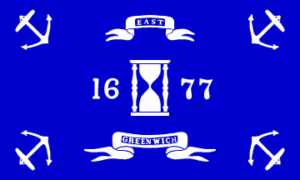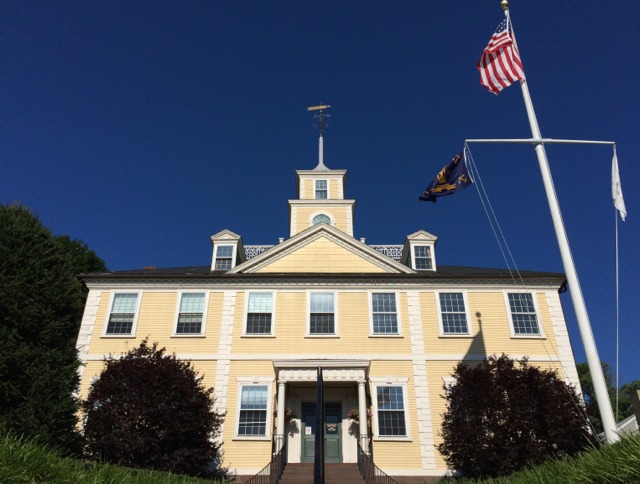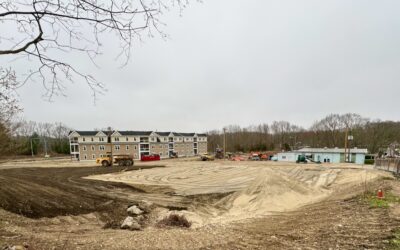Homeowners would see their taxes go up by 0.91% – 21 cents per $1,000 assessed value.
By Elizabeth F. McNamara
Property taxes may increase even as the town’s overall budget decreases. The budget is down due to savings in the fire department budget, a reduction in debt payments and decision by the town to bond capital expenses instead of including them in the operating budget. But a tax hike is proposed to cover the current year’s budgeted $1 million deficit, a significant proposed cut in state education aid and the decision to budget in a $578,000 surplus to replenish the town’s fund balance.
Oh, and under this plan, residential taxpayers would have a lower tax hike (0.91 percent) than businesses (1.91 percent). Find the budget here.
Of course, that all depends on what budget the Town Council ultimately approves. They formally start budget discussions on Monday; by Town Charter, they must approve a budget by June 10*.
The fiscal year 2020 budget proposal released this week totals $62.6 million, $664,000 less than 2019. It was put together by the town’s finance consultant Mike D’Amico and Acting Town Manager Joe Duarte.
 After years of budget challenges, the schools get exactly what they asked for in this budget proposal: $36.4 million, a 2.9 percent increase over current spending that equals about $1 million. Last fall, the School Committee had been preparing the groundwork for a lawsuit against the town over what they said – and a programmatic audit of the schools in September showed – was funding below what was necessary to provide the state mandated Basic Education Plan (BEP). The November election brought in a new, all-Democratic Town Council and they voted to give the schools an additional $263,000 for this year. After that, the School Committee voted to not sue the town over funding.
After years of budget challenges, the schools get exactly what they asked for in this budget proposal: $36.4 million, a 2.9 percent increase over current spending that equals about $1 million. Last fall, the School Committee had been preparing the groundwork for a lawsuit against the town over what they said – and a programmatic audit of the schools in September showed – was funding below what was necessary to provide the state mandated Basic Education Plan (BEP). The November election brought in a new, all-Democratic Town Council and they voted to give the schools an additional $263,000 for this year. After that, the School Committee voted to not sue the town over funding.
The fire department budget line dropped by $684,000, due in part because of changes in the just-approved 2019-22 firefighter contract which cut minimum manning from nine firefighters to eight per shift (plus a floater) and a realignment of the overtime budget line, which was nearly $300,000 higher than proved necessary in the 2019 budget.
In addition, about $1 million in debt payments came off the books.
Another significant boost to the operating budget comes in the form of a plan to fund capital expenses (including two new fire vehicles, renovated tennis courts at Cole, and a number of new police cars) through a $2.7 million appropriation bond. By doing that, the line item for capital in the operating budget is cut from $650,000 this year to $100,000.
On the minus side of the budget, the governor’s budget includes a $600,000 cut in education aid to East Greenwich (but, in a quirk of timing, the state budget won’t be finalized until after the town’s budget must be approved so that number could change for the better, or the worse).
East Greenwich’s overall debt load is finally dropping after the building boom in the 2000s, and will continue to drop, even if the Town Council approves the $2.7 million capital appropriation bond and voters approve a $5 million schools capital bond this fall. In 2020, $1 million will come of the books.
Consultant D’Amico said he built in a $578,000 surplus because he felt it would be “prudent” to replenish the town’s surplus after two years of needing to use it for operating expenses.
“In 2018, we had to use over $1 million of fund balance because of the [impact fee legal] judgment,” said D’Amico Thursday. “In fiscal ‘19 we’ll have to use another $1 million or $1.2 million in fund balance because of the way the budget was done. It is my opinion that it would be prudent to put some money back in the fund balance after using so much for the last two years.”
The proposed two-tiered tax rate – with a higher rate for businesses (real estate and tangible property) – would mark a departure for the town, which has traditionally charged the same rate for residents and businesses. Previous Town Councils have argued that one rate is more business friendly and businesses help offset the need for residential property taxes. But Council Vice President Mike Donegan has suggested the two-tiered rate was more homeowner friendly, since the significant majority of the tax burden is borne by residents in East Greenwich. If the Town Council decides against a tiered rate, the tax rate increase would be 1.42 percent.
For a house valued at $400,000, the different rates look like this:
- In 2019, a $9,200 tax bill.
- In 2020, under the proposed two-tiered tax rate, the bill would be $9,284, an increase of $84.
- In 2020, under a single tax rate, the bill would be $9,328, an increase of $128.
D’Amico said a single percent tax rate increase equals “approximately” $550,000.
This would be the first tax rate increase since 2017. In 2018, the Town Council cut the tax rate for the first time in decades, but also cut the schools’ budget request in half. In 2019, the Town Council kept the tax rate flat by taking $1 million out of the town’s surplus to balance the budget and again substantially cut the School Committee’s budget request, as well as keeping some town positions vacant.
The proposed budget restores one position at the police department and the fire clerk position.
The Town Council will take up the proposed budget at its meeting Monday, May 6. Find the agenda here.
* We had the wrong date in the original version of this story. Apologies.
East Greenwich News is a nonprofit organization committed to keeping EG residents informed. Help us keep reporting on local issues by clicking on the Donate button below or sending a check to EG News, 18 Prospect St., E.G., RI 02818. Thanks!






 Subscribe
Subscribe
The 2020 Town Budget as proposed would increase a homeowners property tax rate by 0.91%. At the East Greenwich median home value of $480,000 the tax increase would be $100.
Mark Schwager, East Greenwich Town Council